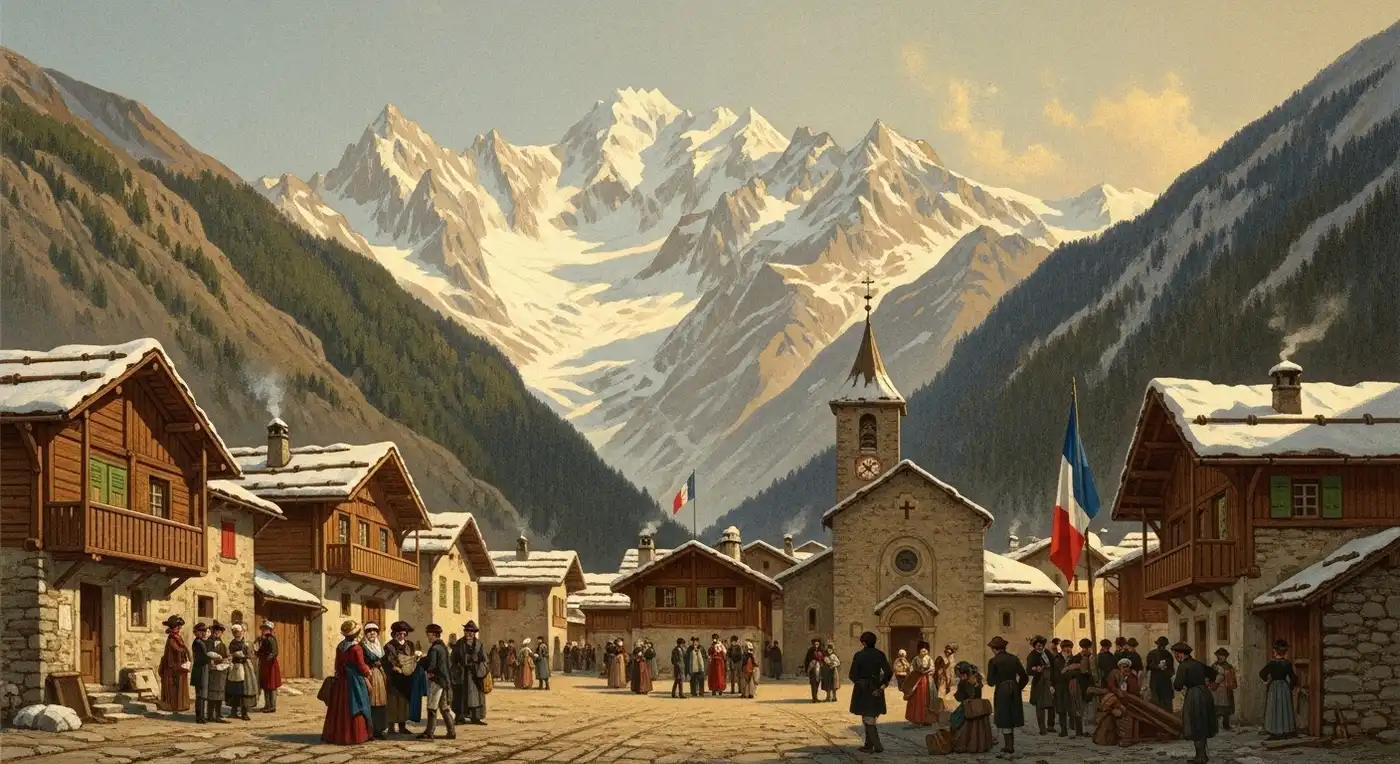Chamonix and the kingdom of Savoy
The Alpine Power That Shaped Italy and France
Nestled in the heart of the Western Alps, between France and Italy, Chamonix was once part of a small but remarkably influential state known as the Kingdom of Savoy. From its medieval origins to its decisive role in the unification of Italy, the House of Savoy left a lasting imprint on both sides of the mountains, and the Chamonix Valley was one of its most remote yet emblematic corners.
Origins: From Counts to Dukes

The story of Savoy begins in the early eleventh century with Humbert I, called Humbert the White-Handed, who established his authority over the region between Lake Geneva and the upper valleys of the Rhône and the Isère. His lineage, the House of Savoy, built its power around key Alpine passes such as the Mont-Cenis and the Petit-Saint-Bernard, vital routes for trade and travel between France and Italy.
Throughout the Middle Ages, the counts of Savoy expanded their influence through diplomacy, marriage, and strategic control of these mountain corridors. In 1416, the Holy Roman Emperor Sigismund elevated Amadeus VIII to the rank of Duke of Savoy, recognizing the growing strength of this Alpine state.
At that time, the Duchy of Savoy included most of what is now Savoie and Haute-Savoie in France, as well as parts of western Switzerland and the Piedmont region in Italy. Its first capital was Chambéry, which remained the political and cultural center of the duchy for nearly two centuries.
A Bridge Between France and Italy
Savoy's unique position on both sides of the Alps made it a bridge between Latin Europe's two major spheres of influence. Its rulers navigated a delicate balance between the French crown to the west and the Italian principalities to the east. The duchy became known for its political pragmatism and for fostering both French and Italian cultures.
In 1563, Duke Emmanuel Philibert transferred the capital from Chambéry to Turin, strengthening Savoy's foothold in Italy. This decision marked a turning point: from that moment, the political center of gravity shifted toward the Piedmont, though the lands of Savoy in the Alps remained an integral part of the state.
From Duchy to Kingdom
In 1720, the House of Savoy acquired the Kingdom of Sardinia, which included the island of Sardinia together with the mainland territories of Piedmont, Savoy, and Nice. From that moment, their rulers held the title of Kings of Sardinia, although Turin remained the true political capital.
During the nineteenth century, this composite kingdom played a central role in the unification of Italy. Under King Victor Emmanuel II and his prime minister Count Camillo di Cavour, the Kingdom of Sardinia led the campaign to free northern Italy from Austrian rule. In 1859, French Emperor Napoleon III agreed to support their cause militarily, a decisive alliance that allowed the Savoyard armies to win key victories at Magenta and Solferino.
The alliance, however, came at a price. In return for France's military and diplomatic assistance, Victor Emmanuel II agreed to cede Savoy and Nice to France. The reasoning was largely strategic: Savoy lay north of the Alps and was geographically and culturally closer to France than to the new Italian territories. For the king, who aimed to create a unified Italy centered on the Po Valley, maintaining a province isolated beyond the Alps made little sense politically or militarily.
For many Savoyards, the idea of joining France was not unwelcome. Centuries of close economic and linguistic ties had created a natural affinity across the border. French was already widely spoken in administration, the Church, and education, and trade routes linked the valleys of Savoy more to Geneva, Lyon, and Grenoble than to Turin. The annexation was therefore presented as a reunion rather than a loss.
In 1860, the Treaty of Turin formalized the cession. A plebiscite was organized, and the vast majority of voters approved the transfer, officially making Savoy and Nice part of France. The following year, Victor Emmanuel II was proclaimed the first King of a unified Italy, fulfilling the long ambition of the House of Savoy to transform its Alpine duchy into a modern European nation.
In doing so, the dynasty exchanged its ancestral homeland in the Alps for a royal crown, a trade that reshaped the map of Europe and gave birth to both modern Italy and modern Savoie.
Chamonix Within the Savoyard World

Before its annexation to France, the Chamonix Valley belonged fully to the territories of the House of Savoy. The earliest permanent settlement dates to 1091, when Benedictine monks from the Abbey of Saint-Michel-de-la-Cluse in the Piedmont founded a priory there. Their mission was both spiritual and agricultural: they cleared land, built paths, and introduced organized farming in this remote valley.
For centuries, Chamonix was governed under Savoyard administration, paying taxes and following the laws of the duchy. The valley's economy was modest, based on livestock and alpine agriculture, but it maintained close links with the Aosta Valley and the Piedmont, connected by ancient trade routes crossing the mountains.
When Savoy became part of France in 1860, Chamonix followed the same path. It remained a quiet village until the late eighteenth century, when explorers and scientists began to visit the Mer de Glace. The first ascent of Mont Blanc in 1786, during the final decades of Savoyard rule, transformed Chamonix from a rural community into a symbol of Alpine exploration.

Legacy
The Kingdom of Savoy no longer exists as a political entity, but its influence is deeply woven into the history of both France and Italy. The dynasty founded by Humbert the White-Handed produced the kings who unified Italy and ruled until the monarchy was abolished in 1946.
In the Savoie region, the legacy of this past endures in local culture, architecture, and names. Chamonix's own story, from a monastic valley of the Savoyard duchy to a world capital of alpinism, reflects that long and fascinating evolution.
The Alps, once the heart of a small yet ambitious state, remain the silent witnesses of the House of Savoy's extraordinary journey from mountain lords to kings of a nation.